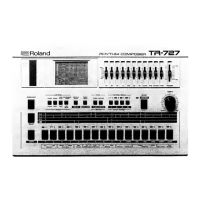Radio
and
television
interference
"Warning
—
This
equipment has
been verified to comply
with
the limits-
for
a
Class
B
computing
device,
pursuant
to
Subpart J,
of
Part
15,
of
FCC
rules.
Operation
with
non-certified
or non-
verified
equipment is likely to result in
interference
to
radio
and
TV
reception."
The
equipment described
in
this manual
generates
and
uses
radio-frequency
energy,
if it
is
not installed
and
used
properly, that is, in strict accordance
with
our
instructions, it may cause
interference
with
radio and
television reception.
This
equipment
has
been
tested
and
found
to com-
ply
with the limits
for
a
Class
B
computing device
in
accordance
with the specifications in Subpart J,
of
Part
15,
of
FCC Rules. These
rules
are designed to
provide
reasonable protection against such
an
inter-
ference in
a
residential installation.
However,
there
is
no
guarantee that
the
interference
will
not
occur in a particular
installation,
if
this
equipment
does
cause
interference to
radio or televi-
sion
reception,
which
can
be
determined
by
turning
the
equipment
on
and
off, the
user
is
encouraged
to
try to
correct
the interference by
the
following
measure:
^Disconnect
other devices and
their input/output
cables
one
at
a
time, if the
interference
stops,
it
is
caused
by
either the
other device or its
I/O
cable.
These
devices usually
require
Roland designated
shielded
I/O cables.
For Roland
devices, you can
obtain the
proper shielded cable
from your dealer.
For non Roland
devices, contact the
manufacturer
or dealer
for assistance.
If
your
equipment
does cause
interference
to
radio
or
television
reception,
you can
try to
correct the
interference by using
one
or
more of the
following
measures:
»Turn
the
TV or radio antenna until the
interfer-
ence
stops.
aMove
the equipment to
one
side
or the
other of
the
TV
or radio.
»IV!ove
the
equipment farther away
from the
TV
or
radio.
aPlug
the
equipment into an outlet
that
is
on
a
dif-
ferent circuit than the
TV
or radio.
(That
is,
make
certain
the equipment and the
radio or television
set are
on circuits controlled
by
different circuit
breakers or fuses.)
^Consider
installing
a
rooftop
television
antenna
with
coaxial
cable
lead-in between the
antenna
and
TV.
If
necessary,
you should consult
your dealer or an
experienced
radio/television technician
for
addi-
tional suggestions.
You may
find
helpful
the follow-
ing booklet
prepared
by
the
Federal Communica-
tions Commission:
"How
to
Identify and
Resolve Radio-TV
ence
Problems"
I
nterfer-
This booklet is
available
from the
U.S.
Government
Printing
Office, Washington, D.C., 20402,
Stock
No.
004-000-00345-4.
Contents
[T]
Panel
Descriptions
3
Sj
Outline of the TR-727
6
m
Connections
7
131 Operation 8
1 Getting to
know
your Composer
8
a.
Manual Play 8
b.
Demonstration Program 8
2
Writing and playing
rhythm patterns
-
g
a. Step
Writing
•
g
b.
Tap Writing
14
c. Pattern
Playing
16
3 About Last Step and Scale
17
a. Setting Last Step
18
b.
Setting Scale
18
4
Flam
and Shuffle
20
a. Flam
•
20
b.
Shuffle
21
5 Track Writing
and
Playing
22
a. Track Writing
22
b.
Track Playing
23
6 Editing
24
a.
Track Editing
24
b. Delete
25
c. Insert
25
7 Other useful
functions for
editing
28
a.
Copying
a
Single pattern
28
b. Copy
(within
Tracks)
28
c.
Chaining patterns together
29
8 Tape
Interface
31
a. Saving 31
b..
Verification
32
c.
Loading 34
d. Setting
a
file
number 34
9
Memory
Cartridge
35
a. Selecting
a
Bank
35
b.
Saving and Loading
'
36
10
External
Connections
37
a.
Multi Output
37
b.
Trigger Out, Start/Stop
37
n
SYNC
38
a.
Sync using
DIN
38
b.
Sync using
MIDI
39
c.
Sync using Tape Recorder
40
12 fVIIDI
42
a.
Setting
MIDI
Channel 42
b.
OMNI
Mode
•
•
•
43
c.
Key
Number
44
d.
Transmitting
MIDI
Message
from the Composer
46
iH Specifications
.
51
Please^
read:the;separaterVolume="M|CII"
the
n-thisKowner'svmanualfbr^
better
understarrdi^

